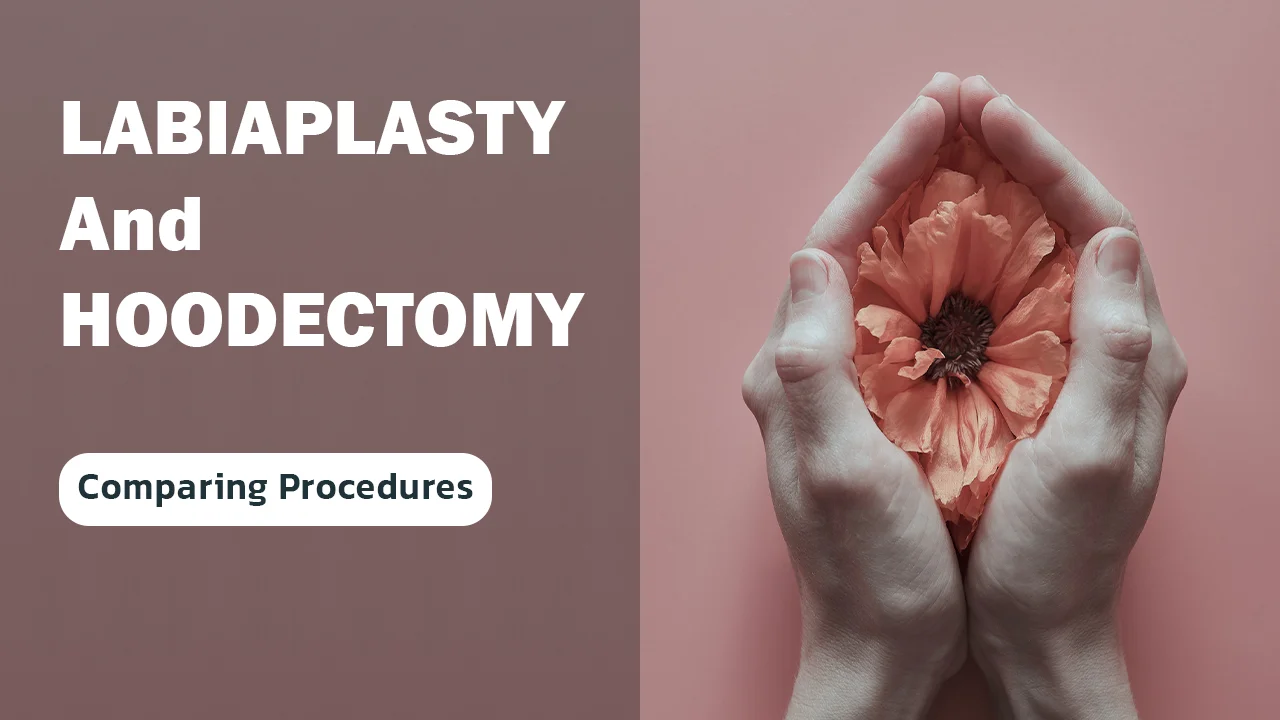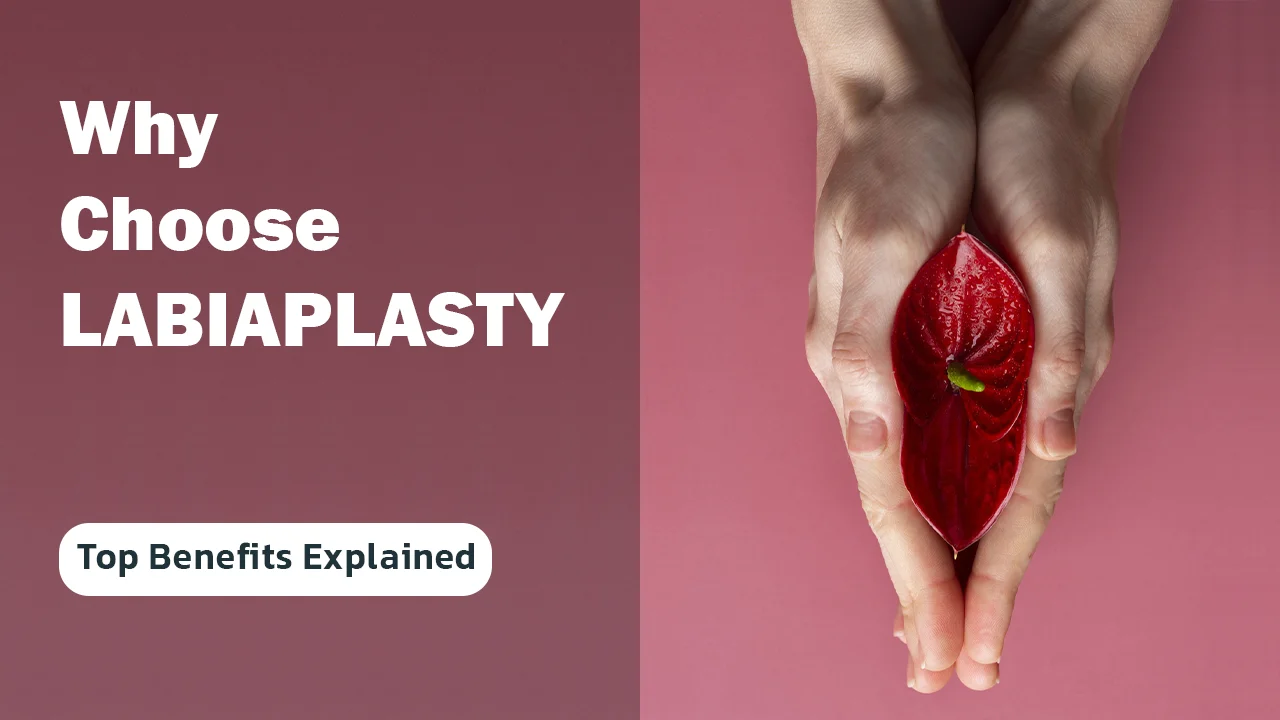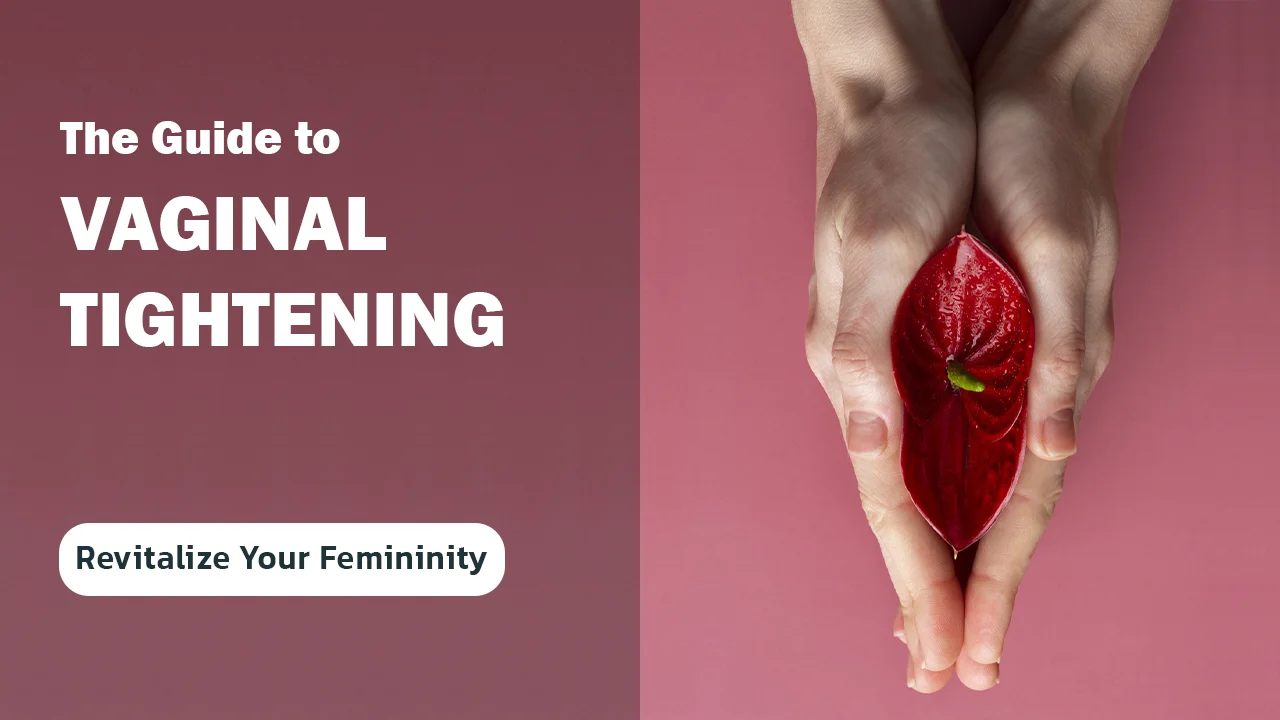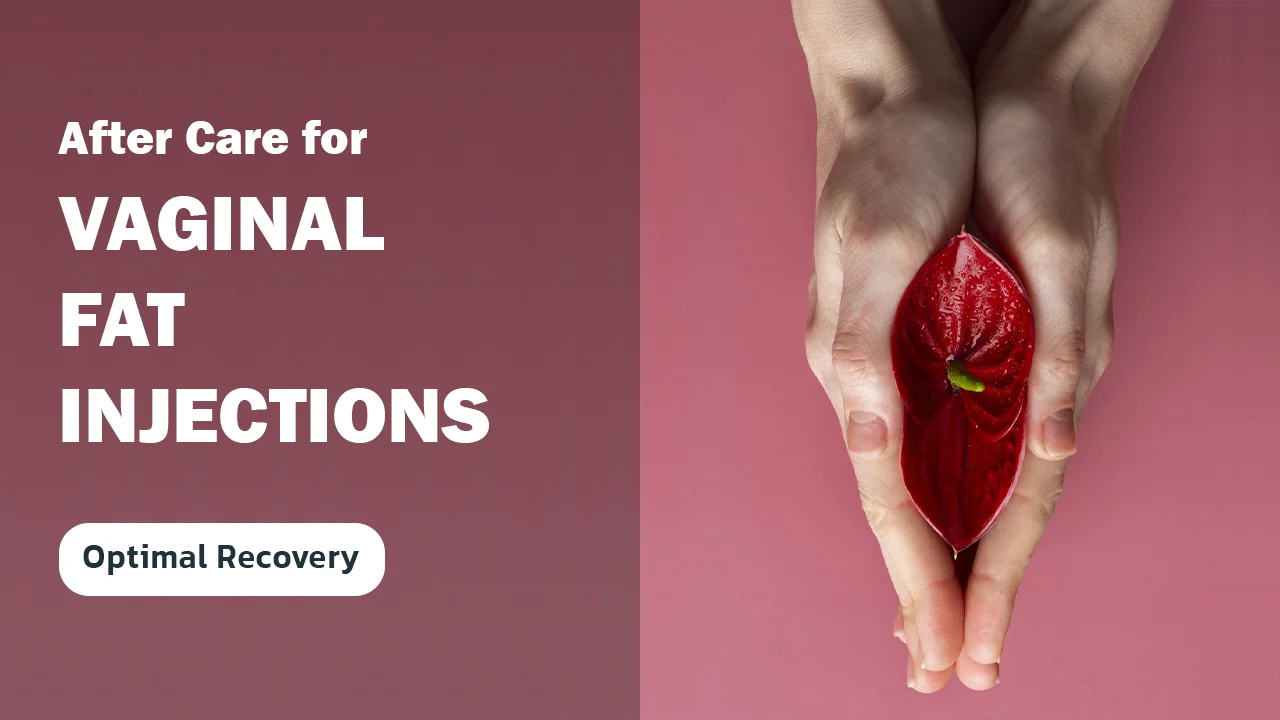Labiaplasty, a term that has been gaining both curiosity and acceptance over recent years, is…

In the realm of cosmetic surgery, making informed decisions is paramount, especially when it concerns procedures as intimate and personal as labiaplasty and hoodectomy. Both operations offer unique benefits and cater to different needs, yet they are often shrouded in confusion and misconceptions. This article aims to shed light on labiaplasty and hoodectomy, comparing and contrasting these procedures to help individuals understand their differences, benefits, and which might be the right choice for their specific circumstances.
Labiaplasty, primarily focusing on the labia minora and labia majora, seeks to reshape or reduce the size of the labia, often for comfort, aesthetic reasons, or health concerns. On the other hand, a hoodectomy, or clitoral hood reduction, involves removing excess skin around the clitoris to increase sexual satisfaction and alleviate discomfort. Despite their distinct purposes, both surgeries share the common goal of enhancing personal well-being and confidence.
As we delve deeper into the specifics of each procedure, it becomes evident that the choice between labiaplasty and hoodectomy is not merely about aesthetic preference but involves careful consideration of physical comfort, sexual health, and psychological well-being. Through expert insights, real patient experiences, and a detailed examination of each procedure, this article provides a comprehensive guide for those contemplating these cosmetic surgeries. By comparing labiaplasty and hoodectomy side by side, we aim to empower readers with the knowledge necessary to make informed, confident decisions about their bodies and their health.
What is Labiaplasty?
Labiaplasty is a surgical procedure aimed at altering the appearance or size of the labia minora and/or labia majora, which are the outer and inner folds of skin surrounding the vulva. Many individuals opt for this surgery due to discomfort from chafing or irritation during physical activities, dissatisfaction with the appearance, or for health-related reasons. The goal of labiaplasty is not only to improve the aesthetic appearance but also to enhance comfort and reduce any physical discomfort associated with enlarged labia.
Definition and Purpose
Labiaplasty serves a dual purpose: it addresses both physical discomfort and psychological distress that may arise from the appearance of the labia. This procedure can significantly improve an individual’s quality of life, providing relief from pain during intercourse, exercise, or even when wearing tight clothing. Additionally, it can boost self-esteem and sexual confidence for those self-conscious about their appearance.
The Procedure: What to Expect
The labiaplasty procedure typically takes one to two hours and can be performed under local anesthesia with sedation or general anesthesia. Surgeons may employ various techniques, such as trimming the excess tissue or employing a wedge method to maintain a natural border. Recovery time varies, but most individuals can return to work within a week, with complete healing taking up to six weeks. It’s crucial for patients to follow their surgeon’s post-operative care instructions to ensure optimal healing.
Benefits and Considerations
The benefits of labiaplasty extend beyond aesthetics, including reduced discomfort during physical activities and improved hygiene. However, as with any surgical procedure, there are considerations to keep in mind. Potential risks include infection, changes in sensation, and dissatisfaction with the outcome. Therefore, it’s essential for individuals to consult with experienced surgeons to discuss their expectations and concerns thoroughly.
What is Hoodectomy?
A hoodectomy, also known as clitoral unhooding or clitoral hood reduction, involves the surgical removal of excess skin covering the clitoris. This procedure aims to increase sexual satisfaction by enhancing clitoral sensitivity and is sometimes sought by individuals who experience difficulty achieving orgasm due to excess tissue.
Defining Hoodectomy
Hoodectomy targets the clitoral hood, the fold of skin surrounding the clitoris, which can vary significantly in size among individuals. For some, a pronounced clitoral hood may diminish sexual pleasure or contribute to discomfort. A hoodectomy offers a solution by exposing more of the clitoral glans, potentially enhancing sexual stimulation.
The Surgical Process
Performed under local anesthesia, a hoodectomy is generally a quick procedure, often completed in less than an hour. The surgeon carefully excises the excess skin, taking care not to affect the sensitive clitoral nerves adversely. Recovery is typically swift, with most patients resuming normal activities within a few days, though sexual activity should be avoided for up to six weeks.
Advantages and Factors to Consider
The primary advantage of a hoodectomy is the potential for increased sexual pleasure due to enhanced clitoral sensitivity. However, candidates for this procedure should carefully weigh the benefits against the risks, such as infection, scarring, or changes in sensation. Consulting with a skilled and understanding surgeon is crucial to ensure the desired outcomes align with realistic expectations.
Comparing Labiaplasty and Hoodectomy
When considering cosmetic genital surgery, understanding the key differences between labiaplasty and hoodectomy is crucial. Both procedures aim to improve the patient’s quality of life and sexual satisfaction but focus on different aspects of the genital area. By comparing them side by side, individuals can better determine which procedure aligns with their personal goals and physical needs.
The Key Differences
Labiaplasty primarily targets the labia minora and majora, focusing on reshaping or reducing the size of these external structures for aesthetic or comfort reasons. Hoodectomy, in contrast, focuses on the clitoral hood, aiming to remove excess skin to increase clitoral sensitivity and enhance sexual pleasure. While labiaplasty addresses concerns related to discomfort or dissatisfaction with the appearance of the labia, hoodectomy is more about improving sexual function.
Procedure and Recovery
Both procedures are typically outpatient, with labiaplasty lasting between one to two hours and hoodectomy often taking less than an hour. Recovery from labiaplasty may take a bit longer, with most patients resuming normal activities within a week and full recovery in six weeks. Hoodectomy patients might experience a quicker recovery, often returning to daily routines within a few days, though sexual activities should be avoided for up to six weeks post-surgery. The choice of local or general anesthesia depends on the patient’s comfort and the surgeon’s recommendation.
Cost Comparison
The cost of both procedures can vary widely depending on geographic location, the surgeon’s expertise, and the specific needs of the patient. Generally, labiaplasty may have a higher cost due to the complexity and duration of the surgery. It’s important for patients to consult with their surgeon about the expected costs and consider them in the context of their budget and the potential impact on their quality of life.
Who is a Good Candidate for Each Procedure?
Identifying the right candidates for labiaplasty and hoodectomy is key to achieving satisfactory outcomes. Candidates must have realistic expectations, a clear understanding of the procedure, and a strong desire for change that stems from personal discomfort or dissatisfaction, rather than external pressures.
Labiaplasty Candidates
Ideal candidates for labiaplasty are individuals experiencing physical discomfort or self-consciousness due to the size or shape of their labia. This discomfort can manifest during activities like exercise, sexual intercourse, or when wearing certain clothing. Emotional distress related to the appearance of the labia also qualifies an individual as a good candidate.
Hoodectomy Candidates
Candidates for a hoodectomy typically include those who have difficulty achieving orgasm or do not experience optimal sexual satisfaction due to excess clitoral hood tissue. The procedure may be suitable for individuals looking to enhance sexual pleasure by increasing clitoral sensitivity. As with labiaplasty, a thorough consultation with a specialized surgeon is essential to discuss expectations and potential outcomes.
Real Patient Experiences
Success Stories
Real-life success stories offer invaluable insights into the transformative impact of labiaplasty and hoodectomy. Many patients report a significant enhancement in their quality of life, including increased comfort during physical activities, improved self-esteem, and, in the case of hoodectomy, heightened sexual satisfaction. These stories often highlight the importance of choosing a skilled surgeon and the positive psychological effects of addressing long-standing concerns about one’s body.
Challenges and How They Were Overcome
While many experiences are positive, it’s crucial to acknowledge the challenges some patients face during their recovery. Common issues include managing discomfort in the initial post-operative period, adjusting to changes in sensation, and setting realistic expectations for the outcome. Overcoming these challenges is often attributed to following post-operative care instructions diligently, maintaining open communication with the surgical team, and allowing time for emotional adjustment to the changes.
FAQs about Labiaplasty and Hoodectomy
- How do I know if I’m a good candidate for labiaplasty or hoodectomy?
-
-
- Good candidates are those experiencing physical discomfort, dissatisfaction with appearance (labiaplasty), or seeking enhanced sexual satisfaction (hoodectomy). A consultation with a specialized surgeon is essential to determine suitability.
-
- What are the risks associated with these procedures?
-
-
- As with any surgical procedure, risks include infection, changes in sensation, and dissatisfaction with the results. Selecting an experienced surgeon minimizes these risks.
-
- How long is the recovery process?
-
-
- Recovery times vary; labiaplasty patients typically resume normal activities within a week, with full recovery in six weeks. Hoodectomy recovery is often quicker, with most activities resumable within a few days.
-
- Will these procedures affect sexual sensation?
-
- Labiaplasty primarily aims to address physical discomfort and appearance, with most patients reporting no change or an improvement in sexual sensation. Hoodectomy is designed to increase clitoral sensitivity, potentially enhancing sexual pleasure.
Conclusion
The journey through understanding and comparing labiaplasty and hoodectomy underscores the importance of personal choice in the pursuit of physical comfort and sexual satisfaction. Both procedures, though distinct in their focus and outcomes, offer pathways to increased self-confidence and quality of life for those who feel hindered by physical discomfort or dissatisfaction with their body. The decision to undergo labiaplasty or hoodectomy is deeply personal and should be made with a comprehensive understanding of the potential benefits, risks, and recovery processes involved.
Choosing the right procedure involves careful consideration of one’s physical needs, desired outcomes, and the professional advice of a skilled surgeon. It’s essential to approach these decisions with realistic expectations and a clear understanding of how they align with one’s personal goals and well-being. Consulting with a surgeon who specializes in these procedures can provide valuable insights and guidance tailored to individual circumstances.
Ultimately, the stories of those who have navigated these decisions and the frequently asked questions we’ve addressed highlight a universal truth: informed choices lead to empowered patients. Whether opting for labiaplasty, hoodectomy, or deciding against surgery, the key is to prioritize one’s health, comfort, and happiness. In doing so, individuals can embrace their bodies with confidence, secure in the knowledge that they have made the best decision for their personal well-being.



